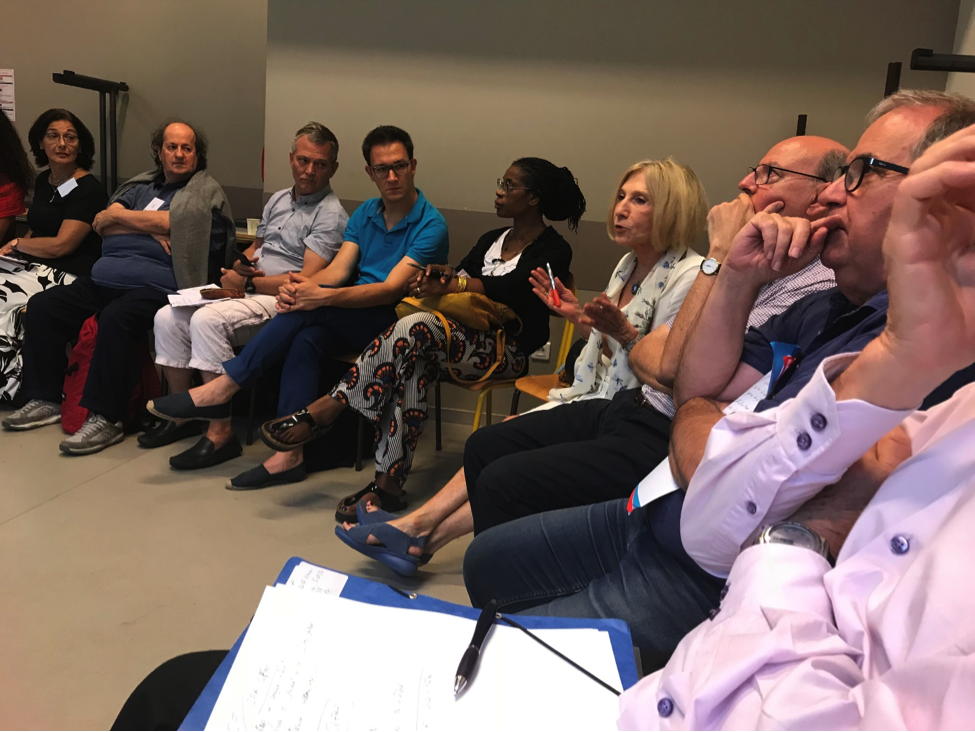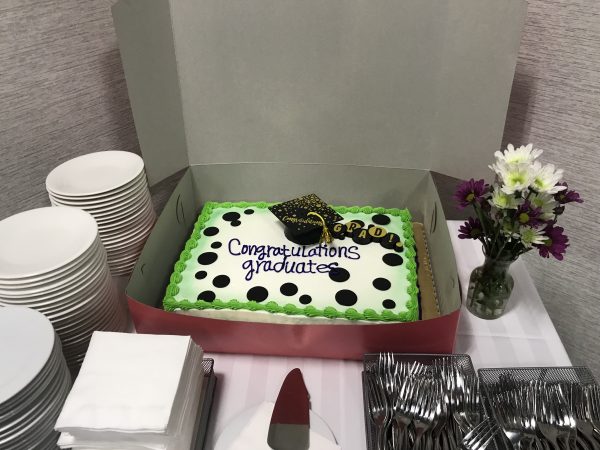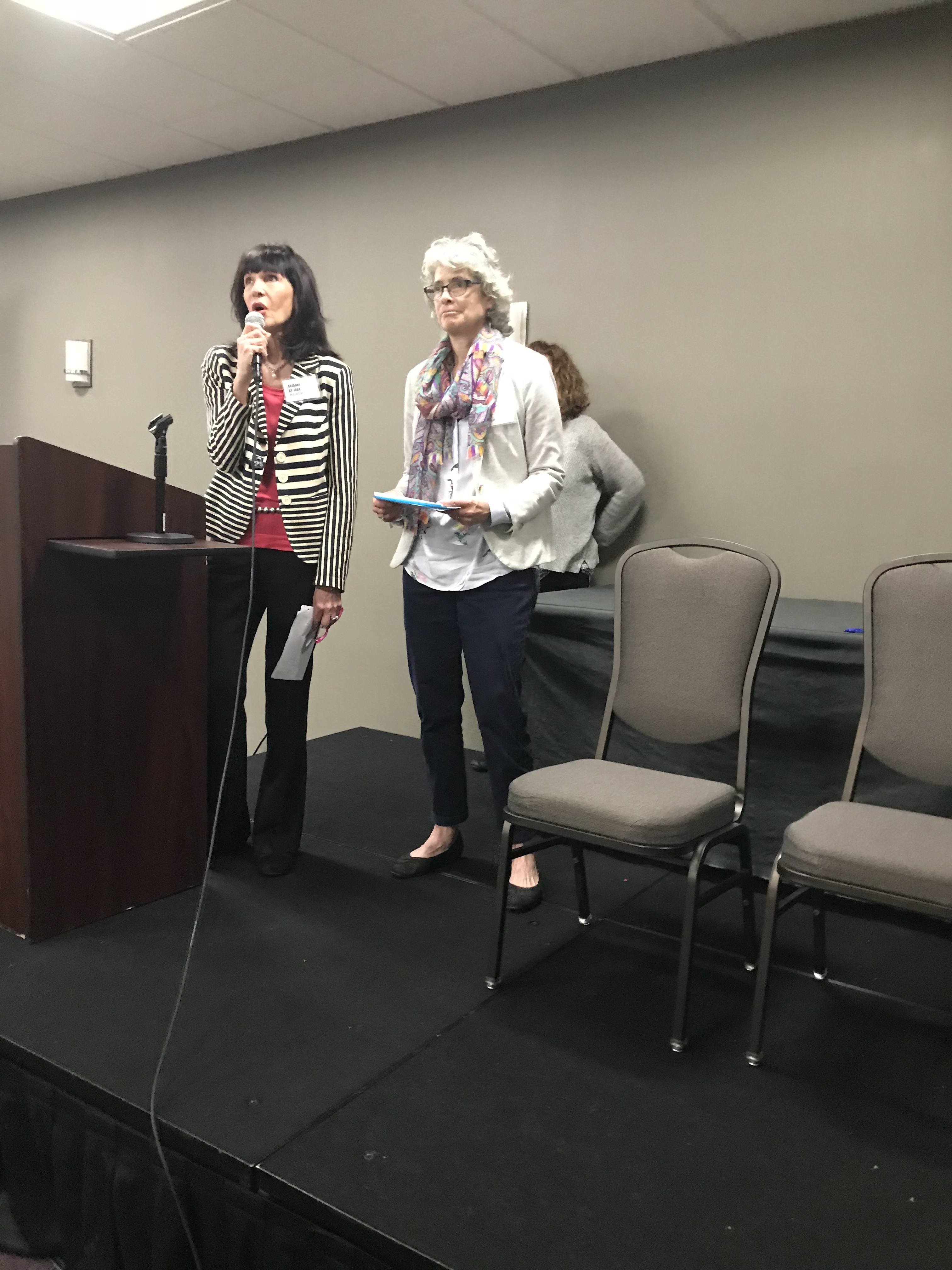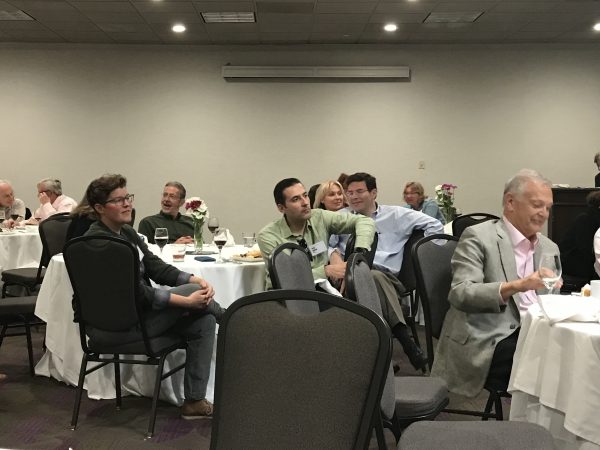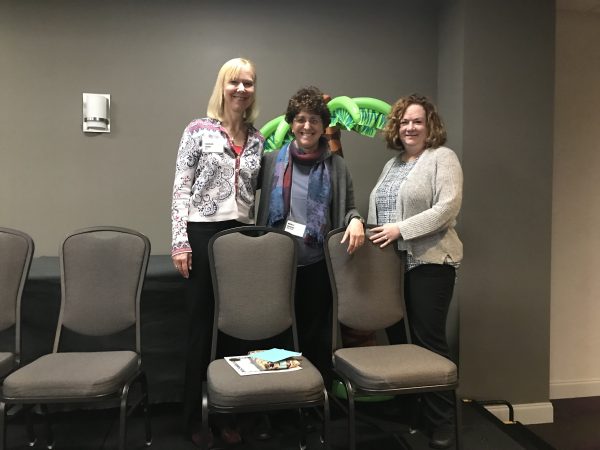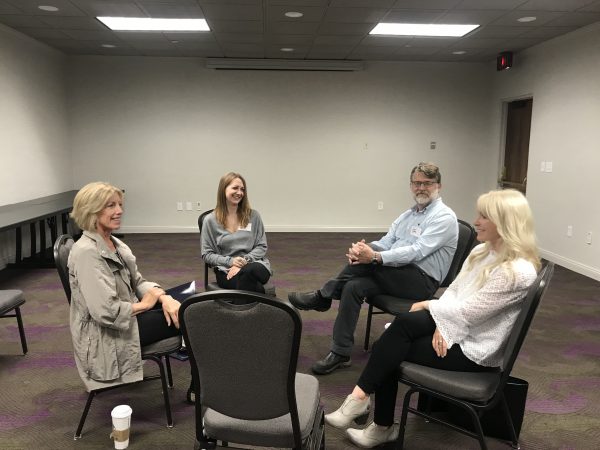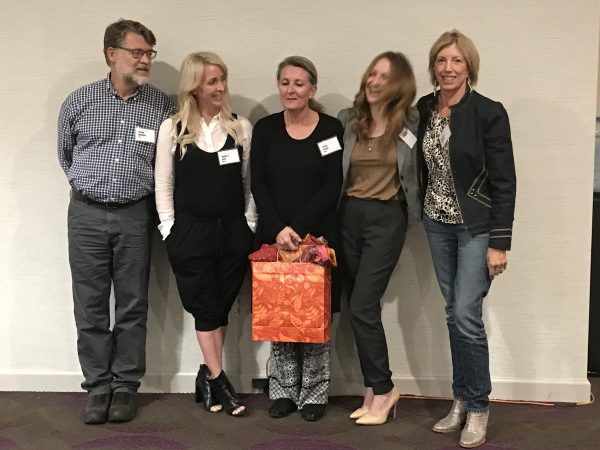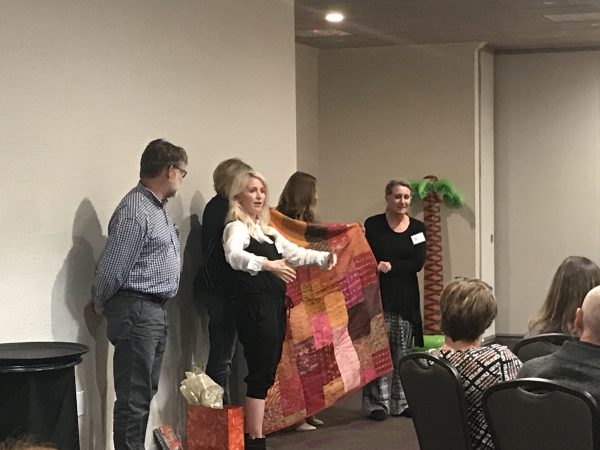By Charles Ashbach, Ph.D.
In 1921 Sigmund Freud published his famous monograph Group Psychology and the Analysis of the Ego. Driven by the madness, savagery and destruction of the First World War, he set about expanding psychoanalytic principles to explain the dynamics of social cohesion. It’s worthwhile that the original German title of the work was better translated as “Mass” or “Horde” psychology than “Group.”
In a similar way this essay will attempt to apply the principles and understanding developed by both Freud and Bion to help explain the social-psychological processes that have brought the United States to a condition of near “collapse” and economic “crisis.”
Freud combined his study of the libido with the mechanism of identification to explain how a group of separate and heterogeneous individuals combine to form a common emotional bond and construct a cohesive social system capable of a wide range of both creative and destructive acts.
He observed that it was through a process of introjective identification that individuals, sharing a common purpose, need, or function, were able to constitute a psychological group. Each individual internalized the image of the central leadership figure, experienced in the unconscious as a representative of the father. This process of common connection and investment of the leader had the effect of allowing all members of the group to now possess a common love object.
Furthermore, and most importantly, the installation of the leader’s image inside the individual’s super-ego-ideal created a common conscience and experience of morality. The leader, now functioning as the ideal, brought about a revalued narcissistic sense. Ideals and aspirations of the leader, and his ideology, become central to the individual member of the group. A single love object, shared conscience, and unified ideal combine to provide the members of the group a common sense of reality and purpose. Out of the many, the One was formed: E Pluribus Unum.
The common features possessed by each member, create a kind of psychic “gyroscope,” make cohesive social action possible. At the same time the homogenization of the values, beliefs, and ideals of group members leads to a decrease of diversity, complexity, and reality testing. The sense of oneness, which generates feelings of inclusion, connection, and safety works against the freedom of thought, feelings, difference, and doubt.
Once unified under a common banner the group must face the task of dealing with the aggression that is the consequence of human ambivalence. Splitting and projection are the prime mechanisms used to place the dangers of love and hate into the external, non-group environment. In fact, one of the central functions of any group is the discovery or creation of “enemies” in order to define and solidify boundaries and contain threats to the common ideal.
The feeling that a “group” exists, apart from the members who make it up, reveals the massive regression that is the consequence of sharing a common conscience and ideal. The group’s cohesion places demands on the individual members to maintain their sense of identity in the face of its homogenizing force. The pressure to define what is “true” by what is “shared” is intense and on going.
In the 1950’s Wilfred Bion offered a series of important developments in the theory of group formation and dynamics. Rather than locating the central group conflict in the Oedipal complex and family “romance” as Freud did, Bion sought the deeper dynamics of the group in the primitive emotional and phantasy experiences characteristic of the infant’s earliest connection to the mother.
For Bion, this meant the anxieties of attachment and the dangers of annihilation preceded concerns about competition and castration. Specifically, psychotic anxiety and dread were now posited as the core dynamic force that the group had to encounter and resolve.
Bion considered the group-as-a-whole to be the primary object of concern for the members of the group. While the leader provided structure and organization, the group as “mother object” provided the true source of comfort and protection against the dangers and challenges that the members faced.
The group as common object is created by the membership through a process of projective identification, not, as Freud thought, through introjective identification. In essence, each member places varying elements of the self within the group-object and then internalizes that “created” entity.
Leader, group-as-a-whole, and member now are seen to exist in a complex field that is constituted to protect the psyche and emotions of each member through a complex structure where phantasy and reality are continually acted upon, at the deepest levels of unconscious experience, to insure the maintenance of the group’s central illusion or ideology.
Bion then added a crucial concept to group dynamics. Not only is the group formed, but the members are able to use it to create a common phantasy condition, shared, unconsciously and anonymously, by all members of the group. This common “disposition” or attitude followed the group’s need to protect its narcissistic cohesion and sense of shared reality. Bion called this regressive condition the group’s basic assumption.
He felt that embedded in human nature were three organizing paradigms that provided the primary forms that collectives arrange themselves in to function and survive: Dependency, based upon the infant at the breast; Fight/Flight, based upon the paranoid and delusional experience of a threat to the integrity of the group; and Pairing, which had to do with phantasies of the primal scene and the conception of a child who would realize the wish for an omnipotent Messiah.
The basic assumption state is a regressive state, in flight from reality and dedicated to maintaining both a sense of primitive object relating and an experience of narcissistic wholeness and invulnerability. The term ‘basic assumption’ may sound as if it contains rational or conscious considerations, but actually it is an aspect of the depth unconscious, closer to psycho-somatic states, and centered on the most primitive emotional and phantasy elements.
In the basic assumption mode the ego’s function of reality testing is subordinated to the group’s primary task of affirming delusion: we are all good and pure; our leader is all loving and all knowing. Therefore another common state of group experience is required for the members to maintain connection to reality in order to adapt, think, change and grow. This mode of group structure and function Bion calls the work group.
The work group is in constant oscillation with one or more of the basic assumption states as the group deals with the challenges and demands of internal and external reality. Members reclaim their individuality in the work group, and yield it when they become the unthinking agglomeration of the basic assumption group.
The basic assumption state reveals a different definition and understanding of leadership. Rather than the leader imposing his or her idea, ideals, or vision on the members, Bion sees the membership selecting one particular individual because of that person’s susceptibility to carrying out the phantasies and emotions central to the operative basic assumption state.
The Group’s “reaction” to the catastrophe of 9-11
Having presented this overview of group dynamics, it is my contention that we can better think dynamically and symbolically about how the group, the United States, has gotten itself into the terrible set of circumstances it now faces. The problems of the group’s fear of “terror” and the worries about “collapse” and “depression” seem best illuminated by Bion’s paradigm of the basic assumptions.
The psychological effects of the tragedy of 9-11 included the shattering of the nation’s sense of invulnerability and of the absolute sense of safety of the American homeland. Those internal experiences and beliefs evaporated as surely as the steel and concrete of the Towers were immolated in those terrible fires.
As clinicians we’re aware that trauma results when events violently exceed the expectations, boundaries, and experiences of an individual. The fall of the Towers and the shock of the unknown pushed the group toward of state of overwhelming dread and disorientation. The group’s regression into the basic assumption state of Fight/Flight was the defensive adaptation to fend off the fragmenting anxieties and dread generated by these unprecedented events.
The regression was quickly revealed by the country’s stated goal of waging a war “on terror”—not on terrorists, not on para-national groups, but on terror itself. If any therapist had a patient present for treatment with the stated goal of destroying terror, per se, we would be taken aback and suggest that the person consider coming in 3 or 4 times a week to help them through their crisis.
At the national level we started organizing our resources and might to destroy a ghost, demon, or chimera. Billions, no trillions, of dollars and thousands of our soldiers have been sacrificed on the altar of this crusade against “terror.”
The Flight/Flight basic assumption allows for the mobilization of enormous states of aggression in a condition of “innocence.” Further, the normal moral structure that prohibits members from committing violence, “thou shall not kill,” is superseded by the revalued group conscience, “thou must kill.”
The enormity of the trauma caused the group to split itself. We became the “good and innocent” victims and the “terrorists” became the evil perpetrators. So much trauma, anxiety, and guilt was generated that no process of national reflection was possible. Therefore no reflection about the complex geo-political, economic and military circumstances that provided the context for the attacks was possible. The idea of guilt surfaced, but only in the form of accusations by fundamentalist preachers blaming the country for its “sins.”
To this day, no significant discussion of our feelings of guilt and responsibility has occurred, and no thorough process of finding meanings in all of this suffering and chaos has emerged. When the good object is lost, the absence is filled with the presence of the bad object, and doubt becomes persecutory.
Might we unconsciously fear that some angry deity punished our attempts to build our version of the Tower(s) of Babel and this catastrophe was the manifestation of the deity’s ire and dismay?
The group, in its manic movement into Flight/Fight mode, sought and seemingly found the moral high ground that then was used as a platform to engage in any behavior or action we deemed justified by the extent of our trauma. The group reshaped its morals and ideals in light of the trauma and in light of the need for guilt-free vengeance.
Since we sought to destroy internal objects in the guise of external enemies we created a deep sense of confusion and disorientation. To show how “good” and “grateful” we were as members of the basic assumption group, we idealized all those who protected us, and all were called “heroes.” The endorsement of leadership became total. In spite of the obvious and shocking deficiencies of President Bush, the group embraced him and reinforced his power to continue to lead us in our Fight/Flight state.
While many now criticize and lament President Bush’s failed and tragic leadership, we would do well to keep in mind the group’s creation of him to fulfill our basic assumption needs. Bush was our dummy; we, the collective, were the ventriloquist. As we now seek to assign blame, our collective responsibility lies hidden, lurking in the shadows of our indignation.
The absence created by our flight from reality was filled systematically with all forms of distraction, stimulation, and charade. Not the least of which was the creation of a war. War served both the need to attack our actual, external enemies, but, more importantly, to contain the sense of inner badness by projecting it into the enemy. In this phantasy mode, war was also a means of offering up sacrifice to the angry “god” who “punished” us on 9-11. On that altar we destroyed billions from our treasury and thousands of our children. It is no accident that soldiers are described as infant-ry.
The economic bubble that was created can now be seen to contain a manic action that would encourage consumption as an antidote for the grief, guilt, and confusion that has never left the American psyche. We should probably think of all of this manic economic behavior, especially the housing “bubble” and the middle class’s use of credit cards, as a kind of air-bag deployed to protect us from banging into the hard edge of the reality lurking in our collective unconscious.
Certainly the madness of the banks, with their abandonment of economic and fiscal reality, has to be seen in the shadow of the overall flight from the stress, conflict, and suffering that the group was avoiding. The use of the word “depression” seems to be a symbolic means of introducing the group’s real problem, guilt over the injury or destruction of good objects, into the national psyche. As yet we have not been able to approach the depressive position that might allow us to re-claim our responsibility for the madness and destruction we have authored.
Eventually, the group, like manic individuals, ran out of its perverse energy and crashed. The seven plus years of running from the internal threats and demons finally became too much for the group. It seems that the group had literally and figuratively depleted itself. Once we heard the clarion call of Obama’s vision of reality, hope, and justice, we began to contact some of the deeper layers of grief, guilt, confusion, and shame. Though, certainly, the sense of imminent Messianic transformation shows the group shifting from the Fight/Flight to the Pairing basic assumption.
In Pairing basic assumption the group believes that two individuals or forces will come together and create a “messiah” who will come from the future to save us in the present. Of course, the messiah must never be allowed to show up because his, or her, presence would disrupt the hope for magical transformation with the demands for actual work, change and responsibility.
Messiahs are almost always killed before they attempt to fulfill their mission of transforming some basic aspect of human nature. Probably it is better to see the death of the Messiah than to see the death of the dream that humanity can be fundamentally altered by the power or message of one individual. We can easily think of JFK, Martin Luther King, Bobby Kennedy, John Lennon, Malcolm X as representatives of that pattern.
Obama’s ascent seems to mark a recovery of the group out of the basic assumption state and toward the work group. His emphasis on equity, justice, thought, reality and lucid articulation represent the functions of the work group; while at the same time the yearning for Messianic magic seems to be the embodiment of both Dependency and Pairing. Somehow all will be solved for us, and Obama, along with whom (Hillary? Michele?), will produce a miraculous resolution to the 30 years of indifference, corruption, and the “dirty dealing,” from both the left and the right, that has skewed the national agenda away from justice and equality and more toward the rich and super-rich.
The bi-valent approach of Obama, toward more reality on the one hand, and toward manic stimulus on the other, suggests that he’s trying to serve some of the basic assumption needs of the group while attempting to engage the work function. The rabid resistance of the radical right shows the persistence of the Fight/Flight assumption and the seductive paranoid pull toward fantasy—away from reality testing. The lure of ideological psychosis persists in the core of the society, that is, at the center of each of us. Somehow, this position says, we should be able to solve our problems through hate and splitting, or through slavish dependency, without entering into a dialogue with reality.
We will soon see what elements of the group emerge and dominate the national agenda.
